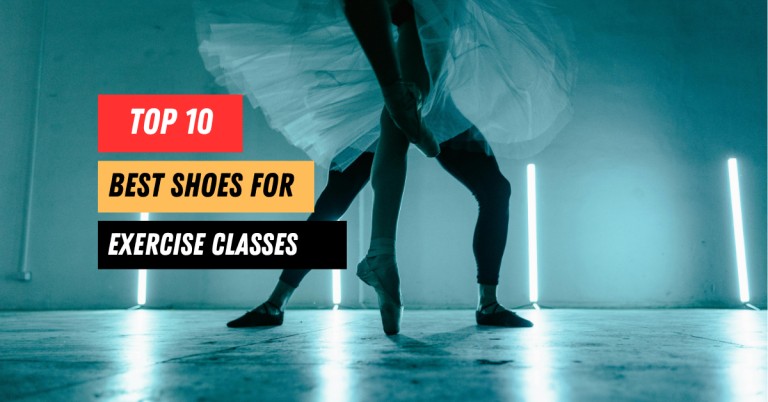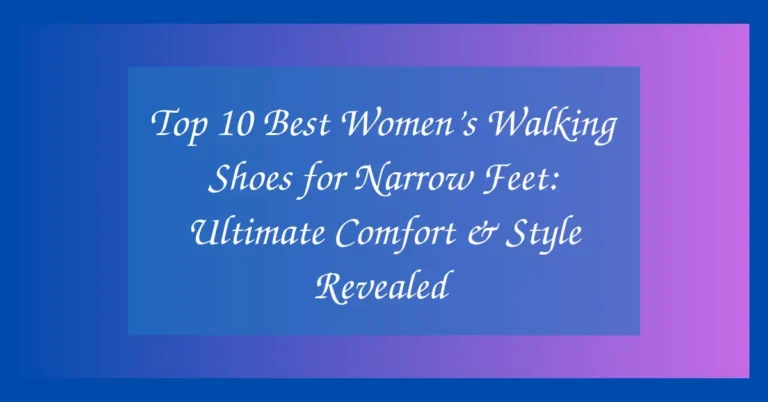The BEST Women’s Hiking Shoes for Plantar Fasciitis ( Comfort Meets Adventure)
Choosing the right hiking shoes is crucial, especially for women with plantar fasciitis, a common foot condition that causes heel pain and discomfort. For avid hikers who face this challenge, the correct footwear isn’t just a matter of comfort—it’s essential for maintaining safety and performance on the trails. The right pair of hiking shoes can mitigate pain, provide necessary support, and prevent further injury, allowing enthusiasts to continue exploring nature without discomfort. This article delves into the best women’s hiking shoes designed to cater to those with plantar fasciitis, offering insights and practical advice to help you make an informed decision on your next pair of trail companions.
Top 10 Shoe Reviews for Women’s Hiking Shoes Suitable for Plantar Fasciitis
1. Merrell Moab 2 Ventilator Mid
The Merrell Moab 2 Ventilator Mid is a standout choice for women with plantar fasciitis who need reliable footwear for the trails. This shoe is designed with comfort and durability in mind, featuring a supportive footbed and a Vibram sole known for its exceptional traction. The mid-height cut offers ample ankle support without being restrictive, ideal for varied terrains. Its breathable mesh lining ensures your feet stay cool and dry, which is critical during long hikes. Moreover, the air cushion in the heel absorbs shock and adds stability, a boon for those suffering from foot pain.
The Merrell Moab 2 has a suede leather and mesh upper that not only makes it durable but also gives it a rugged yet stylish look. Its bellows tongue keeps debris out while you’re on the move. The shoe’s footbed is treated with a protective antimicrobial solution to reduce odor, enhancing the overall foot environment. Adjusting to individual foot shapes, the Moab 2 provides personalized comfort, which is crucial for managing plantar fasciitis symptoms over prolonged periods.
Pros:
-
Excellent traction with Vibram sole
-
Air cushion in heel for shock absorption
-
Durable suede leather and mesh upper
-
Antimicrobial treatment in the footbed
-
Good ankle support and breathability
Cons:
-
May require a break-in period
-
Not waterproof
2. Salomon X Ultra 3 GTX
The Salomon X Ultra 3 GTX is engineered for women who need aggressive grip and waterproof protection. This shoe features a Contagrip outsole that delivers superior grip on wet, slippery, or uneven surfaces. The Gore-Tex membrane ensures that your feet remain dry, irrespective of the external conditions. Its advanced chassis, placed between the outsole and midsole, maximizes motion control, energy management, and push through protection for an efficient, stable, and responsive ride.
The OrthoLite sock liner in the X Ultra 3 offers a cushioned, cooler, and drier environment for your feet, enhancing comfort during hikes. This shoe also excels in lightweight design, making it easier to move swiftly without straining your feet. The precise fit is ensured with Salomon’s SensiFit technology, which cradles the foot from the midsole to the lacing system.
Pros:
-
Exceptional grip with Contagrip outsole
-
Waterproof Gore-Tex membrane
-
Lightweight and responsive design
-
OrthoLite sockliner for comfort
-
SensiFit technology for a precise fit
Cons:
-
Higher price point
-
Might feel too snug for wider feet
3. Keen Targhee II Waterproof Mid
Keen Targhee II Waterproof Mid is renowned for its durability and comfort, making it a perfect companion for women with plantar fasciitis. It boasts of a waterproof nubuck leather upper and a breathable KEEN.DRY waterproof membrane. The ESS shank provides torsional stability, which is essential for rough terrains, while the multi-directional lug pattern ensures robust traction.
The dual-density EVA midsole enhances long-lasting cushioning, which is critical for reducing foot fatigue and managing plantar fasciitis pain. The metatomical footbed design provides excellent arch support and cradles the natural contours of the foot. Additionally, the Targhee II offers ample room in the toe box, which helps in preventing blisters and other foot discomforts during long hikes.
Pros:
-
Waterproof nubuck leather upper
-
Excellent traction with multi-directional lugs
-
Robust torsional stability with ESS shank
-
Generous toe box
-
Great arch support from metatomical footbed
Cons:
-
Slightly heavier than other models
-
May run small, consider sizing up
4. Altra Lone Peak 4.5
The Altra Lone Peak 4.5 is designed for those who prioritize foot shape and comfort. This model stands out with its FootShape toe box, which allows the toes to spread naturally and comfortably. The Zero Drop platform promotes a natural foot alignment, which is beneficial for those with plantar fasciitis. The MaxTrac Rubber outsole provides great traction and durability on rugged terrain.
This shoe features a multi-directional lug pattern and a moderate cushioning that balances comfort with responsiveness. The updated StoneGuard offers better protection against rocks and roots, which complements its overall trail performance. The Altra Lone Peak 4.5 is also appreciated for its lightweight nature, making it ideal for long-distance hiking without adding strain to your feet.
Pros:
-
FootShape toe box for natural toe spread
-
Zero Drop platform for natural foot alignment
-
Excellent traction with MaxTrac Rubber outsole
-
Lightweight and responsive
-
Updated StoneGuard for underfoot protection
Cons:
-
Less ankle support due to low-cut design
-
Not fully waterproof
5. Hoka One One Stinson ATR 5
The Hoka One One Stinson ATR 5 excels in cushioning and comfort, a must-have for hikers with plantar fasciitis. This shoe features a wide platform and an ultra-thick midsole that provides superior cushioning, reducing impact on the foot during hikes. The Meta-Rocker geometry ensures a smooth ride, facilitating natural walking motion and improving gait efficiency.
The shoe’s upper is designed with breathable mesh, supplemented by a durable outer layer for long-lasting wear. Its all-terrain outsole uses podular design and sticky rubber to provide dependable traction in various hiking conditions. The Stinson ATR 5 is also noted for its roomy toe box and overall stability, supporting the foot throughout the hiking journey.
Pros:
-
Exceptional cushioning with thick midsole
-
Meta-Rocker geometry for smooth ride
-
Durable and breathable upper
-
Excellent traction for all-terrain use
-
Roomy toe box and stable design
Cons:
-
Bulky appearance may not appeal to all
-
Higher price point
6. Columbia Newton Ridge Plus Waterproof Amped
The Columbia Newton Ridge Plus Waterproof Amped is a robust choice for women seeking dependable hiking footwear compatible with plantar fasciitis needs. This shoe features a waterproof leather upper with mesh bootie construction, ensuring dry and comfortable feet regardless of weather conditions. The lightweight Techlite midsole offers long-lasting comfort, superior cushioning, and high energy return, which is crucial for reducing foot fatigue during hikes.
With an Omni-Grip non-marking traction rubber outsole, the Newton Ridge Plus provides excellent stability and grip on diverse terrains. The lace-up closure secures a snug fit, enhancing overall foot support, particularly around the arch and heel area. The shoe’s durability is complemented by its stylish design, making it a practical yet fashionable option for serious hikers.
Pros:
-
Waterproof leather and mesh construction
-
Lightweight and cushioned Techlite midsole
-
Superior traction with Omni-Grip outsole
-
Stylish yet functional design
-
Excellent foot support and snug fit
Cons:
-
May feel stiff initially
-
Limited color options
7. Brooks Cascadia 15
Brooks Cascadia 15 is tailored for trail runners and hikers who demand high-performance footwear. It features a Pivot Post System that provides stable suspension on both sides of the foot, ideal for uneven surfaces. The shoe’s BioMoGo DNA cushioning adapts to the stride, weight, and speed of the wearer to effectively protect against impact.
This model is equipped with a rugged outsole that offers exceptional traction across a variety of terrain types. The upper is crafted from durable engineered mesh which provides both breathability and resistance to trail debris. The Cascadia 15 also includes a rock shield to protect against sharp objects, ensuring a safe and smooth hiking experience.
Pros:
-
Pivot Post System for stable support
-
Adaptive BioMoGo DNA cushioning
-
Durable and breathable engineered mesh upper
-
Excellent traction on various terrains
-
Integrated rock shield for protection
Cons:
-
May run narrow in the toe area
-
Slightly heavier compared to similar models
8. Vasque Breeze LT GTX
Vasque Breeze LT GTX offers a lightweight yet protective design perfect for women with plantar fasciitis. The GORE-TEX membrane ensures waterproof performance while maintaining breathability, keeping your feet dry from external moisture and comfortable throughout the hike. It features an Anatomical High Rebound footbed which supports and cushions the foot, crucial for those with heel pain.
The Vibram Megagrip outsole provides outstanding durability and grip, making it suitable for a variety of hiking environments. This shoe’s upper is constructed from synthetic microfiber and abrasion-resistant mesh, offering both lightness and resilience. The overall design of the Breeze LT GTX focuses on reducing fatigue while providing ample support and protection.
Pros:
-
Lightweight and protective design
-
Waterproof and breathable GORE-TEX membrane
-
Anatomical High Rebound footbed
-
Durable Vibram Megagrip outsole
-
Resilient synthetic and mesh upper
Cons:
-
Can be pricey
-
May require a break-in period for optimal comfort
9. Adidas Terrex Swift R2 GTX
Adidas Terrex Swift R2 GTX is designed for the adventurous hiker who requires both speed and safety on the trails. It features a GORE-TEX lining for waterproof, breathable performance. The shoe’s Traxion outsole ensures optimal grip in all directions, crucial for maintaining balance on slippery or steep surfaces.
Its lightweight EVA midsole provides prolonged cushioning, while the molded TPU toe cap offers protection against rocks and roots. The Terrex Swift R2 GTX is known for its quick lacing system, which allows for fast adjustments, ensuring a secure fit that supports the midfoot and reduces the risk of aggravating plantar fasciitis.
Pros:
-
Waterproof and breathable GORE-TEX lining
-
Excellent grip with Traxion outsole
-
Lightweight cushioning from EVA midsole
-
Quick lacing system for easy adjustments
-
Protective TPU toe cap
Cons:
-
Less ankle support due to low-cut design
-
Can be less durable than some other hiking shoes
10. La Sportiva Spire GTX
La Sportiva Spire GTX is a high-performance hiking shoe built for rugged durability and exceptional comfort. This shoe integrates GORE-TEX Surround technology which offers unparalleled waterproofing and 360-degree breathability, keeping feet dry and ventilated during intense activities. Its Vibram XS Trek outsole delivers excellent traction and stability, suitable for various ground conditions.
The shoe features a cushioned Ortholite footbed, providing additional arch support and reducing strain on the plantar fascia. The compression-molded EVA midsole enhances shock absorption, important for minimizing impacts during hikes. The Spire GTX is engineered with a Nano-Cell 2.0 structure which allows maximum airflow, adding to its overall foot comfort and health features.
Pros:
-
Advanced GORE-TEX Surround technology
-
Superior traction with Vibram XS Trek outsole
-
Ortholite footbed for enhanced arch support
-
Robust Nano-Cell 2.0 airflow technology
-
Strong and stable construction
Cons:
-
Higher end of the price spectrum
-
May feel bulkier than other models
Buyer’s Guide
When selecting the best women’s hiking shoes for plantar fasciitis, several key factors must be considered to ensure you get the most out of your hiking experience while taking care of your feet. Here’s what to look for:
1. Arch Support: The most critical feature for plantar fasciitis sufferers is proper arch support. Shoes with enhanced arch support help distribute pressure evenly across your foot, reducing the strain on your plantar fascia. Look for shoes that specify orthotic-friendly features or include arch-supportive insoles.
2. Cushioning: Adequate cushioning in the heel and forefoot helps absorb shock with each step you take on rugged terrains. This is vital to prevent the aggravation of plantar fasciitis symptoms. Opt for shoes with EVA (ethylene vinyl acetate) or memory foam insoles, which offer both comfort and protection.
3. Stability: Shoes that provide good ankle stability can prevent abnormal walking patterns that might exacerbate plantar fasciitis. A firm heel counter and a snug fit around the midfoot help in stabilizing your steps during hikes.
4. Durable Materials: The durability of your hiking shoes ensures they can withstand varied terrains without falling apart. Leather or synthetic upper with water-resistant or waterproof capabilities will protect your feet from wet conditions and offer longevity in your hiking footwear.
5. Outsole Grip: A robust outsole grip is essential for safe hiking. Look for shoes with deep lug patterns made of rubber, which offer superior traction on different surfaces, reducing the risk of slips and falls that could strain your feet further.
6. Breathability: Good ventilation is necessary to keep your feet dry and comfortable during long hikes. Shoes with mesh panels or breathable materials will enhance airflow, preventing moisture buildup and reducing the risk of blisters.
7. Weight: Lightweight shoes reduce the workload on your feet, which is particularly important for those with plantar fasciitis. Heavy shoes might increase fatigue and pain, so opting for a lighter model can be beneficial.
By considering these factors, you can choose a pair of hiking shoes that not only support your plantar fasciitis but also enhance your hiking experience.
FAQ
Q1: What are the signs that my hiking shoes are good for plantar fasciitis?
Good hiking shoes for plantar fasciitis will offer excellent arch support, ample cushioning, and stability. They should allow for an even distribution of pressure across your foot and minimize stress on the heel and arch area.
Q2: Can I use orthotic inserts with my hiking shoes?
Absolutely, many hiking shoes are compatible with custom orthotic inserts. This can be particularly beneficial for plantar fasciitis sufferers, as tailored orthotics provide the specific support and cushioning needed.
Q3: How often should I replace my hiking shoes?
It’s recommended to replace your hiking shoes every 300 to 500 miles, depending on the shoe’s construction and the terrain you frequently hike. Regular replacement ensures that the shoes maintain their support and cushioning properties.
Q4: Are there specific brands known for good women’s hiking shoes for plantar fasciitis?
Brands like Merrell, Salomon, and Keen are well-regarded for their hiking footwear with features that cater to foot health, including options suitable for plantar fasciitis.
Q5: What is the importance of the heel drop in hiking shoes for plantar fasciitis?
The heel drop refers to the difference in height between the heel and the forefoot of the shoe. A lower heel drop can help reduce stress on your plantar fascia but choosing a heel drop that you are comfortable with is crucial.
Q6: How can I test if a hiking shoe fits well for my plantar fasciitis?
Test hiking shoes at the end of the day when your feet are typically swollen. Ensure there’s enough room to wiggle your toes, but the shoes should be tight enough to prevent your foot from sliding forward on declines.
Q7: What should I avoid in hiking shoes if I have plantar fasciitis?
Avoid shoes that are overly flexible, lacking in arch support, or have minimal cushioning in the heel. Such features might exacerbate pain and discomfort, making your hiking experience unpleasant.
Conclusion
Selecting the right women’s hiking shoes for plantar fasciitis is essential for ensuring safety, functionality, and comfort on the trails. Proper footwear supports the arch, cushions the heel, and provides stability, reducing the risk of exacerbating foot pain. Each of the reviewed models offers unique features designed to meet the specific needs of hikers with plantar fasciitis, highlighting the importance of choosing shoes that offer both protection and performance.







